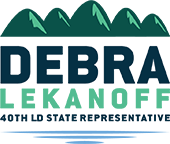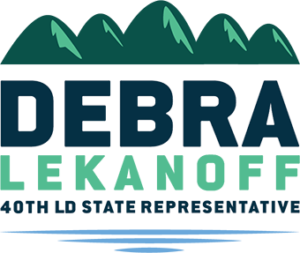Rewriting the Narrative on Fantastic Friday!
Dear Friends,
As I write to you today, I feel a sense of urgency coupled with hope as we reflect on the path ahead. Our communities, particularly those of color, have long been overlooked and left to face challenges on our own. We have witnessed the exploitation of our resources, seen our cultures pulled from their roots, and endured economies that have withered from neglect. Yet, despite these adversities, we continue to rise – resilient, determined, and united.
With leaders like Vice President Kamala Harris at the helm, we are presented with a remarkable opportunity – a promise that she will take our outstretched hands and pull us forward to sit at her table. She recognizes the strength of our collective voices and the wisdom we bring to the decision-making process. The time has come for us to not only participate but to help shape the strategies and policies that will uplift our communities.

Photo courtesy of Harris-Walz Campaign
The onus is on us – not to wait for opportunities to be handed to us, but to create those opportunities ourselves. We are the architects of our future, and together we can design a landscape where our needs are met, our stories are honored, and our strengths are amplified. We must embody the lessons taught to us by the strong women of our communities, who have paved the way and demonstrated the power of perseverance and action.
This is a pivotal moment. As we engage with leaders who reflect our identities, we must actively seek collaboration, ensuring that our voices are heard and our concerns are addressed. We are no longer passive participants; we are co-creators of the future we desire.
Let us commit to invigorate our communities by standing up for one another, advocating for our rights, and pushing for policies that reflect our reality. Together, we can usher in a new era of progress that not only rejuvenates our neighborhoods but also provides a meaningful path forward for future generations.
With Kamala by our side, we can and will forge the connections needed to bring about the change we seek. Let us extend our hands to her and to each other, so we can lift each other up and ensure that our seats at the table are not just occupied but valued.
Together, we can rewrite the narrative for our communities and build the foundation for a brighter tomorrow.
Keep reading for more on this Fantastic Friday.
Rep. Debra Lekanoff
Peggy Flanagain: Pioneering Political Leadership
Peggy Flanagan stands on the cusp of making history as the first Native American woman to serve as governor of Minnesota, contingent on the success of the Harris-Walz ticket in the upcoming November election. Flanagan is no stranger to breaking new ground; in 2016, she became the second Native American woman to address the Democratic National Convention and, two years later, was elected as Minnesota’s lieutenant governor, marking her as the highest-ranking American Indian elected official in the nation.
Throughout her political journey, Flanagan has built an impressive portfolio of experience, including serving on the Minneapolis School Board and leading the Minnesota chapter of the Children’s Defense Fund. Elected to the Minnesota House in 2015, she championed important initiatives before being chosen as Tim Walz’s running mate.

Photo courtesy of USA Today
A 2018 Indianz new article shared Flanagan alongside an extraordinary group of Native women who ran for office, including myself and Deb Haaland, who confidently stood in front of her sign addressing the camera with a clear message: “Hi, I’m Deb Haaland and I’m the Democratic nominee for Congress in New Mexico’s first district. It’s our time as women leaders. It’s our time to stand up against the atrocities happening in this nation and rise together through a unified voice.”
My own quote in the article was significant for me, where I said, “Having the support of a sisterhood running for office this election cycle reminds me every day that we are all in this together. #WeRise together, support one another, and work in the best interest of our communities always.”
This powerful idea of a political network of Native women spans across the country, bringing together leaders such as Haaland (Laguna Pueblo), Lekanoff (Tlingit), Sharice Davids (Ho Chunk), Paulette Jordan (Coeur d’Alene), Flanagan (White Earth), Alexandra Frederick (Lakota), Ruth Buffalo (Mandan Hidatsa Arikara), Ashley McCray (Absentee Shawnee), and many more – over fifty strong. We collectively pushed for change in leadership across the nation, and one of our most memorable moments was witnessing thousands of Native women standing together, united in our efforts to make a difference in our lifetimes, a feat highlighted in several articles from Indian Country Today during that pivotal election cycle.

Rep. Lekanoff and her daughter, Emma
Flanagan’s focus has always been on empowering Native American voices and fostering equitable policies for historically underserved communities. She co-chairs the Young Women’s Initiative and prioritizes housing stability and homelessness across Minnesota, underscoring her commitment to the welfare of families and children.
Reflecting on her relationship with Walz, Flanagan recalls their early mentorship through Camp Wellstone, where she helped train aspiring political candidates. Their partnership has established a strong progressive governing record in Minnesota over the past six years, helping to amplify the needs and rights of Indigenous populations.
As she prepares to potentially step into the role of governor, Flanagan symbolizes hope and progress, breaking the glass ceiling for women of color and inspiring future generations to follow in her footsteps. Her approach embodies a commitment to collaboration and community, ensuring that those who have historically been left behind are central to political decision-making in Minnesota. Together, we are shaping a future that reflects the strength and resilience of Native women and all marginalized communities.
Leading the Way on Climate Change
Throughout my 30 years of working with tribal, federal, state, and local governments on a diverse policy platform encompassing issues such as salmon recovery, water quality and quantity, growth management, health care, and social services, I have observed the increasing significance of climate change as a unifying thread across various levels of government. In particular, I have witnessed how leaders like Washington State Governor Jay Inslee and Minnisota Governor Tim Waltz have dedicated over a decade to building a robust climate change policy framework that has set a national example.
Governor Inslee’s commitment to climate policy has positioned Washington as a leader in progressive climate action, emphasizing renewable energy and sustainability. His administration has successfully introduced legislation to significantly reduce greenhouse gas emissions, invest in clean energy infrastructure, and promote electric vehicles, all while prioritizing support for vulnerable communities.
This comprehensive approach has encouraged collaboration between governmental entities and tribal nations, integrating Indigenous knowledge into state policies. In our own district on the San Juan Islands, the funding from these policies has paid for the increase in habitat for eelgrass planting, restoring the habitat for our salmon and orcas.

Rep. Lekanoff and Governor Inslee
In parallel, Minnesota Governor Tim Walz has emerged as a formidable advocate for the environment. Since taking office, he has implemented ambitious initiatives aimed at transitioning Minnesota to entirely carbon-free electricity by 2040, outpacing many states in the nation. His steady commitment to addressing climate change has garnered recognition, and his policy measures serve as a model for others to follow.
While Washington and Minnesota are making significant strides, it is essential to recognize that many states across the nation are ahead of Washington in certain aspects of climate action. Although we may be seen as moving in a progressive direction, we still lag behind some of our peers in implementing and executing comprehensive climate policies. The need for a cohesive strategy to tackle climate change is critical, and states like Oregon and California have set benchmarks that provide valuable lessons for further advancement.

Photo courtesy of the New York Times
The combined efforts of Inslee, Walz, California’s Governor Gavin Newsom, and other governors represent a concerted push towards a sustainable future. Their collective work not only contributes to the immediate goals of reducing emissions and promoting renewable energy but also serves as a framework for broader national efforts. As we continue to evolve our policies in Washington State, we must look to these models of climate leadership and collaborate across state lines to strengthen our response to one of the defining challenges of our time, and for me this will be the investment of climate change upon the water, habitat, and species survival across this great State.
With our diverse governmental and societal frameworks, we are in a position to enhance resilience and ensure a sustainable, thriving environment for future generations.
Harnessing Clean Energy for a Sustainable Future
Understanding and utilizing state and federal tax credit programs, grants, and initiatives aimed at reducing carbon emissions is crucial for residents of the 40th Legislative District. These programs offer significant financial incentives for individuals and businesses to invest in renewable energy, fostering a collective commitment to sustainability within our communities.
Across our district, from Skagit County farmhouses to civic structures in Anacortes and local government offices in Bellingham, we’re seeing widespread adoption of solar panels. This trend demonstrates our community’s growing awareness and dedication to sustainable practices.
The Inflation Reduction Act (IRA) of 2022 has been transformative, allocating at least $370 billion to clean energy initiatives. In the first year alone, American households claimed over $8 billion in savings, with more than 3.4 million households taking advantage of these subsidies. Over $6 billion was specifically devoted to installing renewable energy systems like rooftop solar panels and small wind turbines.
The popularity of these credits has been particularly high in sunnier states, while energy efficiency improvements like electric heat pumps have gained traction in other regions. This demonstrates a nationwide commitment to energy-efficient home upgrades.
While the Joint Committee on Taxation initially estimated these credits would total roughly $2.4 billion in their first year, the overwhelming response suggests this figure will be exceeded. Over 750,000 households claimed the solar panel tax credit, and more than 260,000 utilized heat pump credits.
Deputy Treasury Secretary Wally Adeyemo emphasized that beyond upfront savings, these programs offer long-term benefits such as reduced utility bills and protection against fossil fuel price volatility. Encouragingly, nearly half of those benefiting from these credits have incomes below $100,000, indicating that these programs are reaching moderate-income families.
In Washington State, the Clean Energy Assistance (CCA) program complements federal efforts by offering state-level tax credits that further incentivize the adoption of renewable technologies. Within our district, we’re seeing a visible commitment to sustainability through the integration of solar panels in various structures.
To take advantage of these programs, homeowners can explore resources from the IRS, U.S. Department of Energy, Washington State Department of Revenue, and Washington State Energy Office. These resources provide information on eligibility and application processes for both federal and state programs.
By leveraging these resources, we can make informed decisions about investing in clean energy technologies, resulting in substantial savings while contributing to a more sustainable future. Our collective action, backed by civic engagement and robust state and federal programs, can significantly contribute to reducing carbon emissions and building a cleaner energy landscape for all.
The Environmental Protection Agency (EPA) has taken significant steps to address the dangers of harmful agricultural chemicals. The agency proposed banning acephate, a pesticide linked to serious cognitive risks, from all food sources except inedible trees. This decision came after a ProPublica investigation revealed issues with the EPA’s previous justification for increasing allowable acephate limits.
Acephate, an organophosphate pesticide used extensively by U.S. farmers to control pests, has been linked to developmental issues, including reduced IQ and verbal comprehension, as well as autism with intellectual disability. About 12 million pounds of acephate were applied in 2019 alone.
The EPA’s proposal follows its emergency suspension of dimethyl tetrachloroterephthalate (DCPA), another pesticide associated with health risks for unborn children. These actions demonstrate the agency’s evolving stance on protecting public health against potentially harmful chemicals.

Photo courtesy of Fly Dragon Drone Tech
Advocacy groups, including the Environmental Working Group and Earthjustice, have expressed cautious optimism about the EPA’s recent actions. They have long pressed for tougher restrictions on acephate and other pesticides.
The EPA is now accepting public comments on the proposed acephate ban until July 1. While some farmers defend the necessity of pesticides like DCPA for crop management, health advocates have called for stricter regulations due to associated health risks.
These landmark decisions signal a significant shift in pesticide regulation and prioritization of public health. However, advocacy groups remain cautious about the EPA’s ability to maintain its position against potential pushback from pesticide manufacturers and trade organizations.
Addressing the Dangers of Chlorpyrifos in Washington State
In Washington State, we’re deeply concerned about the impact of chlorpyrifos, an agricultural pesticide, on children’s neurological development. Research has shown that children exposed to higher levels of chlorpyrifos during critical developmental stages tend to score lower on cognitive tests and face increased risks of lower IQs and behavioral issues like ADHD.
While chlorpyrifos was phased out for household use in 2000, its continued use in agriculture raises concerns about residual chemicals on produce. Studies have detected chlorpyrifos derivatives in children’s urine, which disappeared when switching to an organic diet.

Photo courtesy of Northwest Public Broadcasting
The effects of chlorpyrifos extend beyond consumers to farmworkers and rural communities. Washington and Oregon have received numerous complaints about its misuse and health repercussions linked to pesticide drift. Language barriers and lack of resources have often hindered full reporting of these issues.
Some farmers advocate for continued chlorpyrifos use, citing its affordability and effectiveness against pests. However, experts agree that alternatives exist, albeit at higher costs. The conversation must focus on ensuring safe application processes rather than maintaining the status quo.
Washington Attorney General Bob Ferguson has joined efforts to legally challenge the EPA’s stance on chlorpyrifos. At the grassroots level, individuals like Eric Perez have taken steps to protect their families by converting traditional orchards to organic practices

Photo couresty of the San Diego Union-Tribune
My office prioritizes the safety of Washington’s children. We will continue to advocate for measures that protect public health and ensure a safe environment for all families. This includes supporting research, promoting safer alternatives, and working with agricultural communities to find solutions that balance crop protection with public health concerns.
We encourage residents to stay informed about this issue and support initiatives that promote safer agricultural practices. Together, we can work towards a healthier future for our children and our state.



